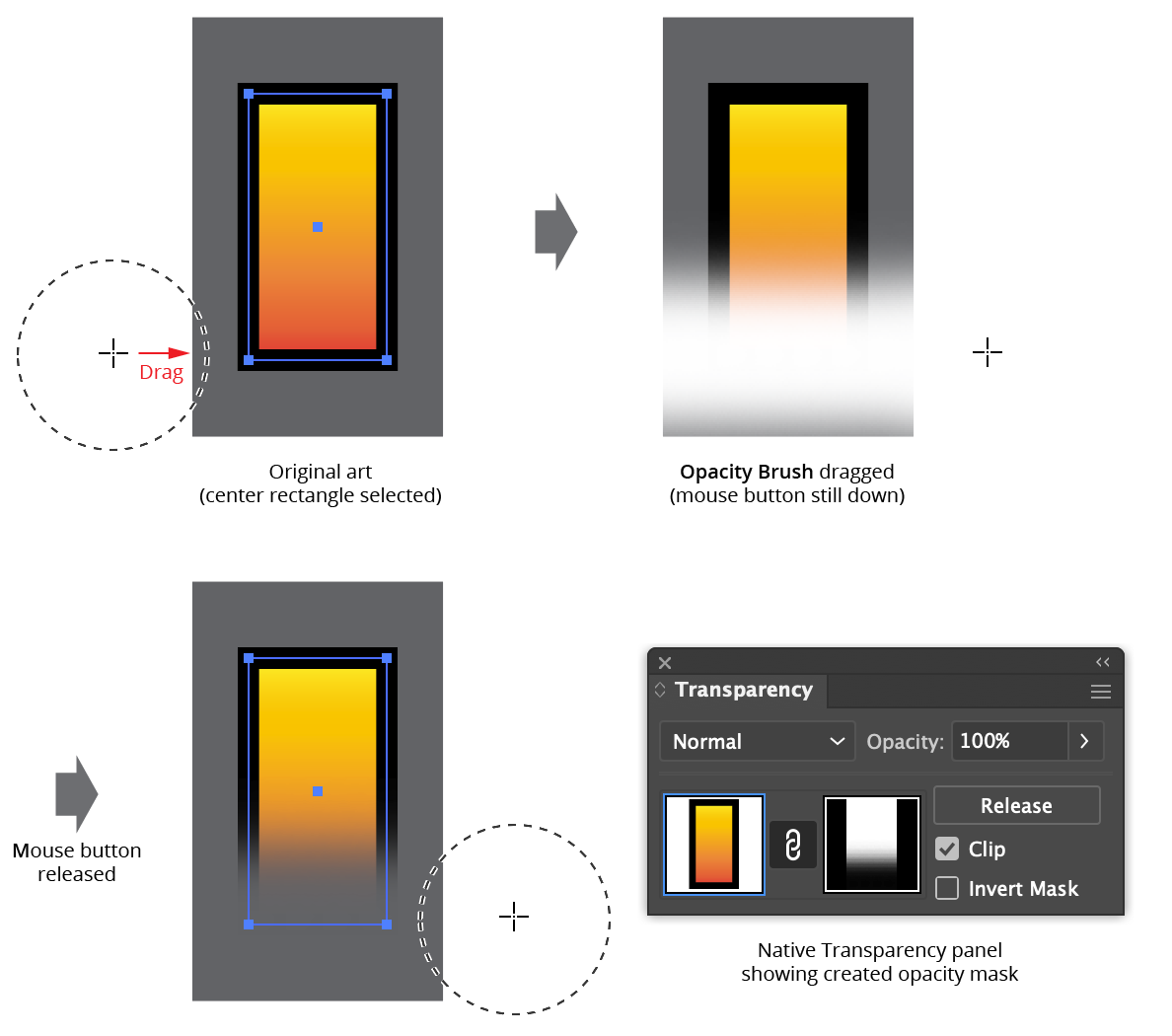 Opacity Brush Tool
Opacity Brush Tool
Tool Location and Cursor Appearance
The Opacity Brush tool appears in Illustrator’s main toolbar (which must be in Advanced mode: View > Toolbars > Advanced).

Opacity Brush Tool Location
The Opacity Brush tool’s cursor is a crosshair. When the tool is not actively brushing, or when brush previews are disabled, it also displays a dark gray, dashed circle (or ellipse) indicating the size and shape of the brush:

Opacity Brush Tool Cursors
A minus sign symbol indicates that the brush is in “erasing” mode.
Opacity Brush Tool Operation
As the Opacity Brush tool has several keypresses which can add or change its functionality, we suggest installing the free Astute Graphics plugin Astute Buddy, which creates a panel that dynamically updates to inform you of the various keys which can be pressed in the tool’s current context.
While the Opacity Brush tool can be used without its panel, some functionality, such as adjusting the amount of noise, requires the panel to access.
To use the tool, simply brush over selected artwork to make it “fade out” in those areas. Opacity Brush automatically creates a raster opacity mask for each selected art object that is not part of the same group. The raster has a default resolution of 72ppi, but the value can be changed in the tool Preferences dialog (see Opacity Brush: Preferences).
If the artwork already has an opacity mask, the raster object will be added to it, at the bottom of the stacking order. If the existing mask was set to invert, this setting will be retained and the brush will appear work in an inverted manner.

Opacity Brush Example
The Opacity Brush tool’s preview can be changed in its preferences; by default, it is white and shows its size, hardness, and opacity faithfully, similar to how a Photoshop brush would draw. Due to technical limitations of Illustrator, this requires CPU preview to be enabled in order to display properly when brushing long distances.
If the Option/Alt key is held down before brushing, the tool will be set to “erasing” mode, whereby each brush stroke adds opacity to the artwork (up to a maximum of 100%), instead of removing it. Like other brush tools, the diameter of the brush can be changed at any time it is active by pressing the keys assigned in the native Keyboard Shortcuts dialog to “Decrease Diameter” and “Increase Diameter.” For English language installations, these default to the open square bracket and close square bracket keys ([ and ]).
Another way to change the brush diameter (and hardness) is to hold down Shift-Option/Alt and click-drag the mouse; this adjusts the diameter. After releasing Shift-Option/Alt (and with the mouse button still down), a second drag will adjust the hardness.
While brushing (i.e., with the mouse button down), several keypresses can be used:
Shift: Constrains the brush motion to the nearest increment of 45° around the general constrain angle.
Left/Right Arrow: Decreases or increases the brush diameter.
0–9: Sets the brush opacity. 1 sets the opacity to 10%, 2 to 20%, etc.
D: Changes the drawing annotation color, cycling through red, blue, magenta, green, black, and white.
E: Changes the erasing annotation color, cycling through red, blue, magenta, green, black, and white.
To reset, invert, or remove the opacity mask created by the Opacity Brush tool, use the Opacity Brush panel.
